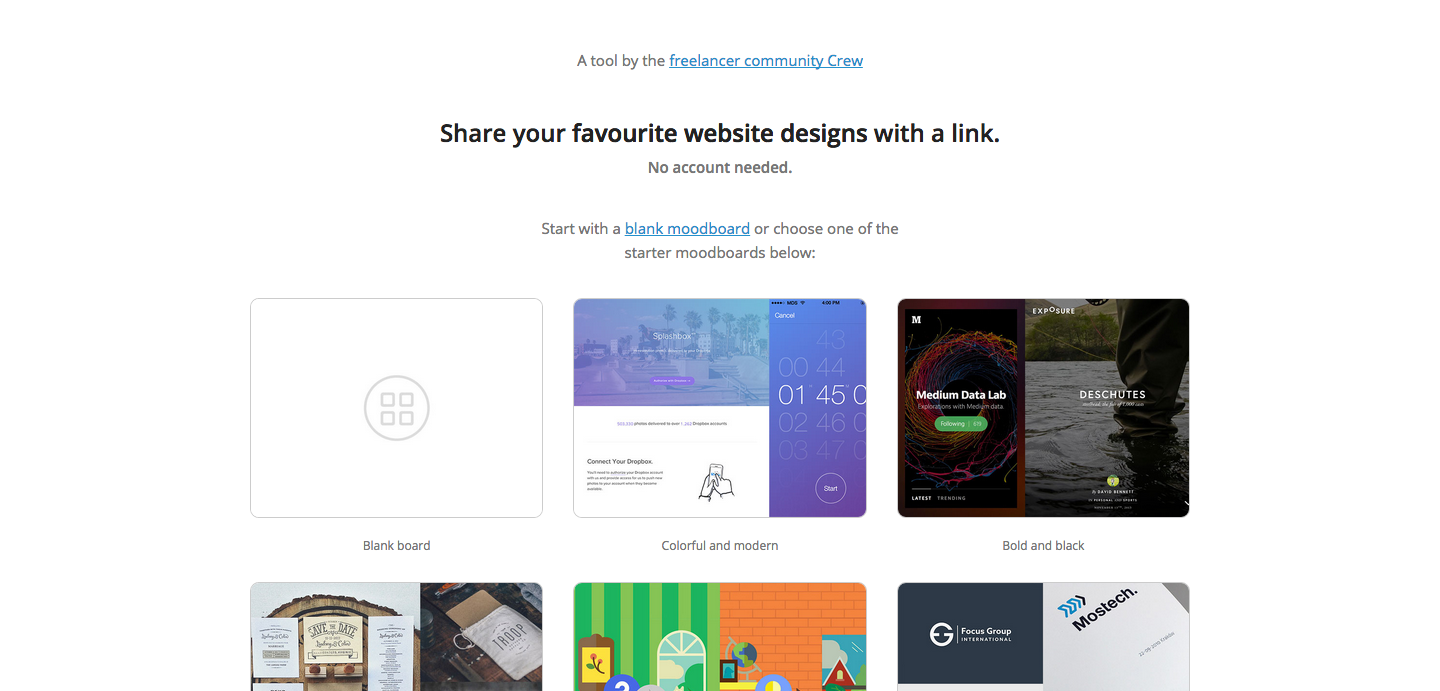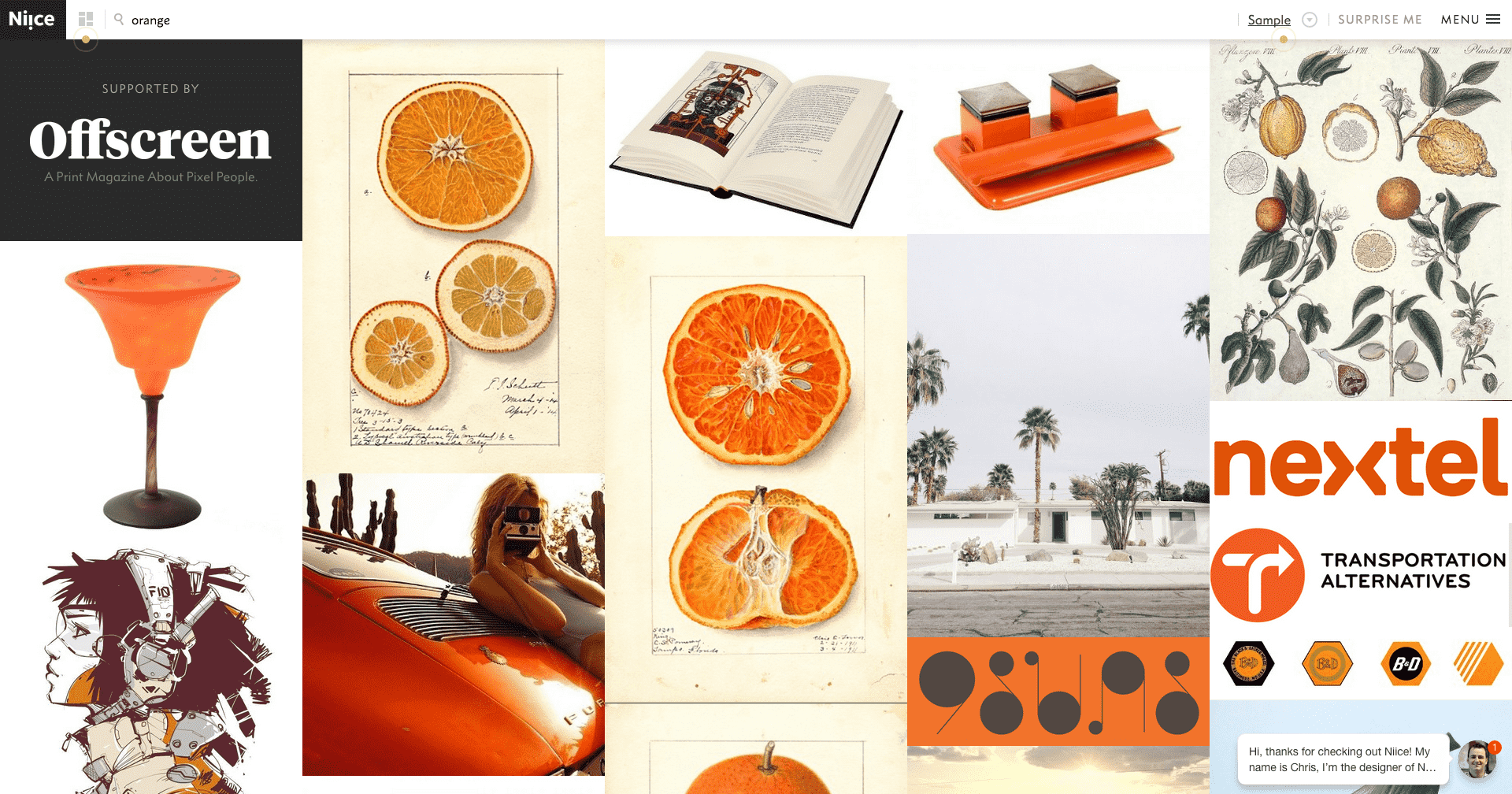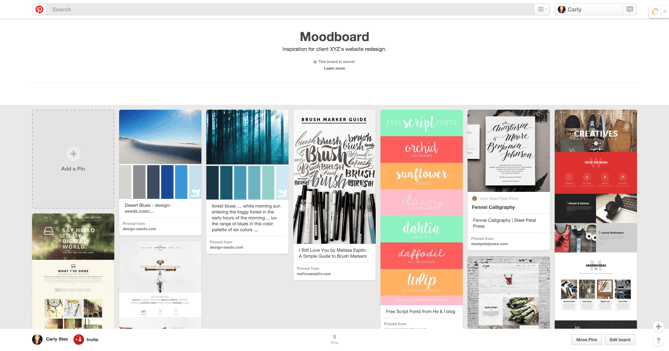Kate Spade recently announced that its sale associates would be referred to as "muses"from here on out. This change in perspective comes at a time in which Kate Spade is looking to transition into a lifestyle brand -- one that offers more than just colorful clothing, handbags, and accessories.
Aside from having admiration for this new initiative, it got me thinking about the role of muses in the work of a marketer. Sure, we all have a vision -- but so do our clients. While we're pulling inspiration from here, they're pulling inspiration from there. See the disconnect?
To ensure that the outcome of a project reflects both your intent as the expert and your client's wants and needs, turn to mood boards as a means of creating context around a new campaign or redesign.
This organizational tool serves as a way to collaborate with your client while also effectively translating your ideas in visualizations. To learn more about leveraging this solution to get everyone on the same page, check out this roundup of tools -- both paid and free -- that you can use to create your own mood board.
1) GoMoodboard
Serving as perhaps the simplest tool on the list, GoMoodboard requires no account to get started.
The tool -- created by the freelancer community Crew -- allows users to get started instantly with either a blank template or one of the nine provided variations.
Once a template is selected, you can drop images onto the screen, and they'll upload right away. You can also add a comment under each image after it's uploaded.
When you publish a board, it will remain private, and you have the option to edit it if need be. If you wish to share it, simply share the link to make it public.
It's really that simple.
Price: Free
2) Niice
Niice incorporates a ton of functionality and purpose into one easy-to-use tool. With Niice, users can source inspirational images, collect them in their very own private spaces, and leverage the drag-and-drop interface to whip up a mood board in minutes.
Another noteworthy feature is the Niice Chrome extension. This allows users to grab and save images as they browse the web.
Price: TryNiice for free with a three mood board limit, or upgrade to a paid account -- ranging from $9 to $45 per month -- for more features and an unlimited number of boards.
3) Pinterest
Struggling to get on the same page with one of your clients regarding your vision for the new look and feel of their website redesign? Can't seem to convey to your designers what you want your new homepage to look like?
While Pinterest is commonly associated with DIY furniture hacks and Crock-Pot recipes, it actually serves as the perfect tool for creating a quick-and-easy mood board. To get started, you'll want to create a new board -- this can be either a public board or a secret board that can be shared with others for collaboration.
Once your board is created, you're free to dig through Pinterest using its search functionality to uncover visuals from which you and your team can draw inspiration. Pull color palettes and different styles of typography that align with what you're looking to create.
Price: Free
Source: Carly Stec







No comments:
Post a Comment